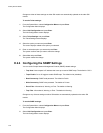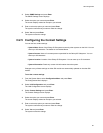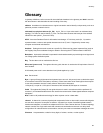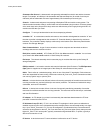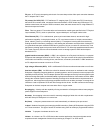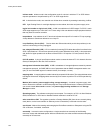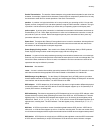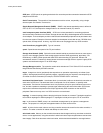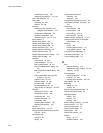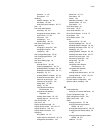Galaxy 65 User Guide
224
initiator mode Initiator mode is the configuration mode of a device in which an FC or SCSI initiator
requests operations to be performed by an FC or SCSI target device.
kill In Active-Active mode, one controller can kill the other controller by resetting it and taking it offline.
LED
Light Emitting Diode. A small light displayed on the cabinet, disk units and power supply units.
logical unit number or logical unit (LUN)
A LUN is a subdivision of a SCSI target. For SCSI-3, each
SCSI target supports up to 128 LUNs. An FC host using LUNs can address multiple peripheral devices
that may share a common controller.
loop address Loop address is an FC term that indicates the unique ID of a node in FC loop topology.
A loop address is sometimes referred to as a Loop ID.
Loop Resiliency Circuit (LRC):
Circuits within the SM modules which provide loop resiliency in the
event of a drive failing or being unplugged.
low voltage differential (LVD) LVD is a method of powering SCSI cables that will be formalized in the
SCSI-3 specifications. LVD uses less power than the current differential drive (HVD), is less expensive,
and allows for higher speeds such as those of Ultra2 SCSI. LVD requires 3.3 volts (versus 5 volts for
HVD).
LRC I/O module A plug-in Input/Output module used to connect the internal FC--AL channels from the
Galaxy 65 backplane to the rear of the enclosure.
management information base (MIB) A MIB is a database of managed objects accessed by network
management protocols. An SNMP MIB is a set of parameters that an SNMP management station can
query or set in the SNMP agent of a network device (for example, a router).
mapping table A mapping table is a table indexed by sequential LUN values. The values indicate select
bus:target:LUN devices. Mapping tables are used by some routers to perform FC-to-SCSI operations by
default.
Module (drive carrier, power supply/cooling, storage manager) A module is a power supply, disk
drive or electronics unit held in a carrier that plugs into a bay inside the enclosure. A Galaxy 65 enclosure
can contain sixteen drive carrier modules, two power supply/cooling modules and two Storage
Manager modules.
Operating system The software running the host computer. For example, on PCs it is often Windows
95/98, Windows NT or OS/2 and on Hewlett-Packard machines it could be HP-UX.
other controller or SM
The opposite controller or Storage Module (SM) from the one currently being
used (that is, not the local controller or SM that you are connected to) is referred to as the other.
out-of-band Method of accessing and managing the Rorke Data controller or Subsystem using the RS-
232 or Ethernet, if available, connection.
ownership
In an active-active configuration, a single controller has ownership of the following
resources: arrays and dedicated spares. When a controller fails, the other controller assumes temporary
ownership of its resources



